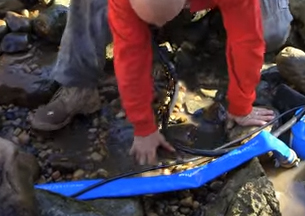vision
'For the best part of 20 years now,' wrote Brian Van Bower in starting his Aqua Culture column from March 2010, ' trend watchers have tracked Baby Boomers and have kept telling us that, as we aged, we'd definitely become homebodies - so much so that the words "nesting," "cocooning" and "staycation" have all taken significant
As a matter of habit and long practice, my design process for an outdoor environment begins the moment I arrive on site, starting with an assessment of the property's physical qualities. Indeed, before I let structures, features and visual details start dancing in my head, I focus on grading, drainage and basic spatial relationships. In my experience, this overview of the practicalities will help drive the design - and allow the aesthetic decisions to flow smoothly into view at the appropriate time. In the case of the project that's been under discussion through this string of four articles, for example, my early assessment of
On an emotional level, one of the toughest things to do in giving an ecosystem pond a good spring cleaning is thinning out the plants. After all, these plants are a big part of the pond's aesthetic appeal, and reducing them as dramatically as we usually do tends to set the watershape's good looks back a notch or two. But we do so knowing it's a
'Science tells us that the human eye can see about seven million colors and that our minds instinctively perceive depth and dimension. This visual capacity,' noted Stephanie Rose at the outset of her Natural Companions column in April 2006, 'enables most of us to move around without bumping into things, some of us to swing at and somehow hit a golf ball and, in the case of a beautiful garden (we can hope), all of us sense
When WaterShapes first appeared in February 1999, those of us behind the magazine had some definite hopes about how things would play out in our declared marketplace. [ ] First was the hope that there really was an emergent
















